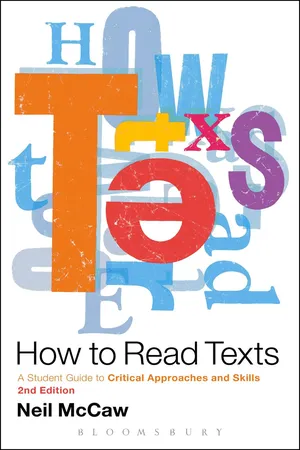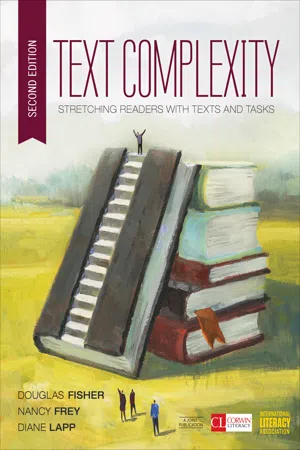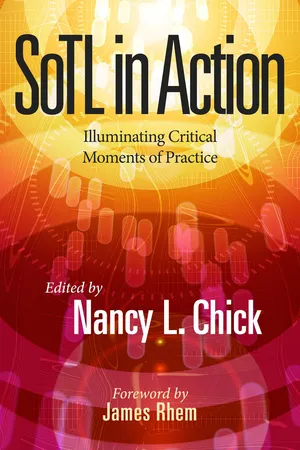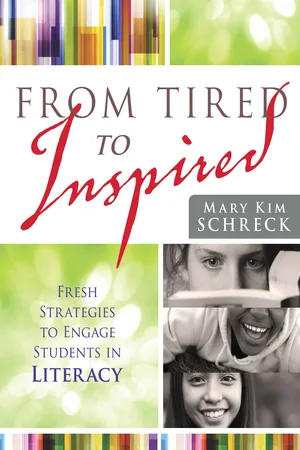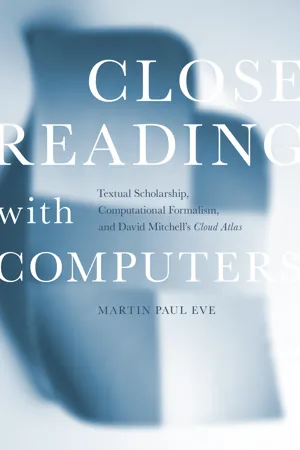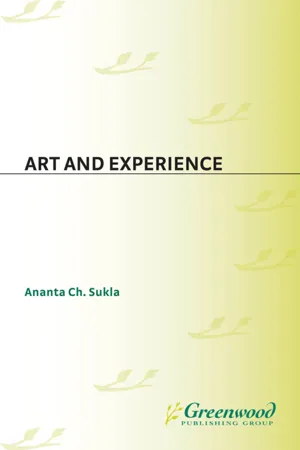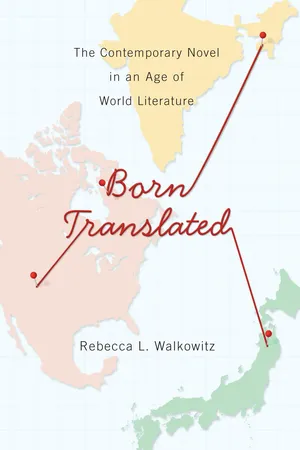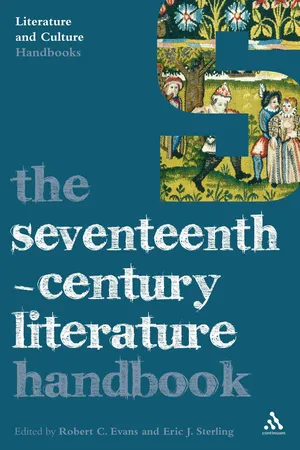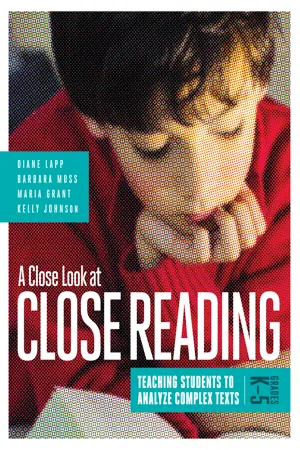Languages & Linguistics
Close Reading
Close reading is a method of literary analysis that involves examining a text in detail to uncover deeper meanings and nuances. It focuses on the specific language, structure, and style of the text, often uncovering layers of meaning that may not be immediately apparent. Close reading is a valuable tool for understanding the intricacies of language and the ways in which authors convey their ideas.
Written by Perlego with AI-assistance
Related key terms
1 of 5
9 Key excerpts on "Close Reading"
- eBook - PDF
How to Read Texts
A Student Guide to Critical Approaches and Skills
- Neil McCaw(Author)
- 2013(Publication Date)
- Bloomsbury Academic(Publisher)
50 How to Read Texts What is Close Reading? Close Reading is the label given to ways of interpreting a text through its formal features (which is why such approaches have also at times been known as formalist ). In written texts this means the language (images, symbols, metaphors and patterns) and style used; in advertising this might also include visual images as well as text; and in film and television this will also involve techniques or features particular to these forms such as the use of close-up camerawork, panning, colour, soundtrack etc. Because of the detailed nature of Close Reading readers/critics tend to choose short works or excerpts of longer texts as the subject for study; lengthy critical expositions can result from even the briefest of materials, as Jacques Derrida’s essay ‘Ulysses’ gramophone’ 1 (which is more than 80 pages long yet which focuses exclusively on the use of the word ‘yes’ in James Joyce’s novel Ulysses (1922)) illustrates. The key thing to remember in close/formalist reading is that everything begins with the text. The close reader is not centrally interested in questions of context. They work up a reading through a tight focus on the specific details of language or image rather than a concern for the life of the author, the politics of the time of publication, or the text’s place in literary/cultural history etc. Close readers examine the structure, diction, syntax, tone, grammar and other internal features because the overarching assumption is that the text is an organic structure consisting of interrelated elements that work to produce meaning; it is the reader’s task to understand how this arrangement of elements functions to achieve the overarching effect. Thinking about … words and their meanings Look up THREE words in the Oxford English Dictionary (or any other dictionary that gives detail of how meanings change over time) and consider how such etymological information might be important to a close reader. - eBook - ePub
Text Complexity
Stretching Readers With Texts and Tasks
- Douglas Fisher, Nancy Frey, Diane Lapp(Authors)
- 2016(Publication Date)
- Corwin(Publisher)
6 Exploring Teacher-Led Tasks Closely Reading Complex Texts© Robert W. Ginn/PhotoEditSince the first edition of this book, significant attention has been focused on Close Reading. This approach to text analysis involves a reader returning to a given text more than once to analyze the language, structures, and patterns as a means to become informed about the message being shared. Close Reading isn’t a teaching strategy in and of itself. Rather, it is an approach to reading. Close Reading involves the myriad ways in which proficient readers make sense of complex text—all with the end goal of understanding what the author is doing and accomplishing, and what the information means. More specifically, Close Reading involves students identifying a purpose(s) for reading, accessing and using prior knowledge, analyzing and determining the meaning of discipline- or topic-based language, organizing and interpreting information, and refining and revising their understanding during each rereading.Close Reading as an approach to text analysis has quite a long history. Referred to as exegesis by early Greek scholars, Close Reading was the interpretative approach used to interrogate sacred texts (Juel, 1998). The idea of close text analysis surfaced again in 1929, when Richards gave his students poems and did not tell them who wrote them or when they were written. He wanted his students to concentrate on the words on the page and to derive the correct meaning from the words themselves, with no preconceived notions about the text or influences from their own lives. This insular view of text interpretation resulted in the New Criticism movement that was developed around 1930 by Empson, a student of Richards.Over the years, Close Reading has fallen in and out of favor. When the pendulum swung away from the focus on the text itself, as noted by Blau (1994), more importance was placed on a reader’s interpretation of the text: “A work of literature is an inert text that can hardly be said to have more than a potential for meaning until it is called into being by a reader who constructs a reading, thereby giving meaning to the text” (p. 26). Rosenblatt (1995) then called for a more balanced approach, noting in her discussion of reader response theory that “[t]he reader must remain faithful to the author’s text and must be alert to the potential clues concerning character and motive” (p. 11). Rosenblatt was concerned that readers might ignore elements in a text and fail to realize that they were “imputing to the author views unjustified by the text” (p. 11). Her concerns were valid with respect to the way the reader response approach was sometimes overemphasized in the classroom: too often students were encouraged to make text-to-self connections to share somewhat related personal experiences, but teachers then failed to have them juxtapose these against the text itself. In these scenarios, classmates may have responded by adding additional personal experiences, and the discussion often ended before they returned to the text. The lack of returning - eBook - ePub
SoTL in Action
Illuminating Critical Moments of Practice
- Nancy L. Chick(Author)
- 2018(Publication Date)
- Stylus Publishing(Publisher)
But what is Close Reading exactly? Some people assume it just means talking about the details of a text, but it’s more than that. Close Reading involves paying attention to what was said and how it was said to increase our understanding about something. Sometimes people complain that Close Reading involves reading too much into the text, that is, making it mean whatever we want. Trying to avoid this situation, literary theorist Scholes (2002) emphasized the need for distance in Close Reading:[read] as if the words belonged to a person at some distance from ourselves in thought or feeling. Perhaps they must be seen as the words of someone else before they can be seen as words at all—or, more particularly, as words that need to be read with close attention. (p. 166)Doing a Close Reading means being willing to consider multiple interpretations of text, even those that don’t seem immediately obvious to us because of our assumptions. Bass and Linkon (2008) discuss Close Reading in terms of inquiry, a framework that may be more familiar to SoTL practitioners:Close Reading integrates four elements: inquiry, texts, theory, and argument. Literary analysis begins with inquiry, often based on an observation. What does this pattern mean? What might we gain by reading this text through this lens? How do the multiple layers of meaning within a text contradict and vex it in culturally meaningful ways? How does one text influence another? Projects end with argument, the detailed explication of a reading that theorizes about the text and extends and refines theory based on that reading. Literary arguments gain validity when they are grounded in careful attention to texts and engaged with theory. The phrase “Close Reading” may seem to imply primary emphasis on the text itself, but the examination of text occurs within and gains significance only when it is embedded in inquiry, engages with theory and generates an argument that is useful to other readers. (p. 247)I think the last part is the hardest. The argument, typically about what a particular passage of text means or why it was written in a specific way, has to be useful to other readers. Poor Close Reading focuses so exclusively on the details of the particular text that no one else cares about the interpretation. A good Close Reading of a particular text provides a reason someone else should care about the interpretation; the interpretation contributes to readers’ understanding of something beyond that passage by providing insight that could be useful in other texts and contexts. - eBook - ePub
From Tired to Inspired
Fresh Strategies to Engage Students in Literacy
- Mary Kim Shreck(Author)
- 2012(Publication Date)
- Solution Tree Press(Publisher)
Chapter OneClose Reading and Close Writing
Close Reading entails a critical analysis and examination of any content, whether it is print, film, music, painting, math, design, nonfiction or fiction, speeches, plays, and so on. Close Reading is slow reading. It is reading that ratchets up attention to detail. In this chapter, we look at how teachers can foster a sensitivity to detail and word choice in order to promote more attentive thinking habits. We also look at using visualization as an effective comprehension tool when attempting to decode complex material.Close Reading is essentially a more text-centered method of moving students to deeper comprehension. Often, it entails multiple passes over the text with a different purpose guiding each reading. Students might read the material the first time for the main idea and overall meaning. The teacher’s questions and consequent activities will reflect this purpose. The next reading might revolve around what choices the author has made regarding, for example, point of view or tone, and require students to analyze the implications of those choices. The third reading might then move to how this text relates to other texts or to the reader’s life, values, and experiences. The product of this reading would be close writing—a critical analysis using a compare and contrast structure. This close writing moves in tandem with the purposes set by the teacher for each consequent reading. Here the connection between reading, writing, and thinking is most authentic. Both Close Reading and close writing are the doorways to building students’ capacity for sustained rigorous practice and robust comprehension.The Need for Rigor
Richard Strong, Harvey Silver, and Matthew Perini (2001) write that rigor is what is required of students for understanding content that is “complex, ambiguous, provocative, and personally or emotionally challenging” (p. 57 ). Much of what occurs in classrooms that is referred to as rigor doesn’t come close to fitting this definition, however. Instead, we often see teachers laboring under the misconception that rigor means giving out more worksheets or assigning more problems, that learning next year’s material a year sooner is rigor, or that rigor means giving writing assignments for a select few students. But as Barbara Blackburn (2008), author of the book Rigor Is Not a Four-Letter Word - eBook - PDF
Close Reading with Computers
Textual Scholarship, Computational Formalism, and David Mitchell's <i>Cloud Atlas</i>
- Martin Paul Eve(Author)
- 2019(Publication Date)
- Stanford University Press(Publisher)
58 Amid Eve Kosofsky Sedgwick’s “reparative reading,” Best and Marcus’s “surface reading,” Althusserian “symptomatic” approaches, and Ricœur’s “hermeneutics/schools of suspicion,” it is clear that the phrase “close C l o s e R e a d i n g s , C o m p u t e r s , a n d C l o u d At l as 9 reading” carries with it a variety of orientations to depth and surface that are independent of closeness to language. As Culler puts it, however, even though “Close Reading need not involve detailed interpretation of literary passages (though there is plenty of that around in Close Reading, especially when the texts in question are difficult to understand),” it is about “attention to how meaning is produced or conveyed, to what sorts of literary and rhetorical strategies and techniques are deployed to achieve what the reader takes to be the effects of the work or passage.” 59 Close Reading seeks, in most cases, to press linguistic detail in the services of literary argument and interpretation. Given the popular academic impression of digital and quantitative approaches to literature as concerned, then, with distance and scale, some readers might be surprised to hear that this question of close textual analysis has certainly occurred to many others in the digital space, al-though it is a less common way of operating. I do not in any way propose it as a novelty even while I aim here to invite a broader audience to the table. 60 It is not quite true, as Dimock puts it, that “unlike Close Reading, distant reading is meant to track [only] large-scale developments; it is not meant to capture the fine print.” 61 For instance, as far back as 1987, John Burrows examined the novels of Jane Austen, in detail, through experi-mental quantitative methods. - eBook - PDF
- Ananta C. Sukla(Author)
- 2003(Publication Date)
- Praeger(Publisher)
C H A P T E R T W O Close Reading, Distant Writing, and the Experience of Language JOHN L L E W E L Y N The belief that a text might be an open proclamation, available to all, coexists comfortably with the belief that it was a repository of secrets. And this quality of sacred books is inherited by their counterparts in the secular canon. 1 Taking Close Reading as its point of departure, this chapter then widens its focus in order to consider the experience of language with some reference to art, interpretation, and "archi-writing." This last will also be called "telescrip- ture," written in the lower case, so that through the first and second syllables, derived not from telos (end) but from tele (distant, far) and through the allu- sion to upper-case Holy Scripture that its third and fourth syllables make, an opening is marked for the eventuality that archi-writing is theography. I In its technical sense, the expression "close does the experience of lan- guage let Close Reading get" is chiefly used of literary texts and of the approach to them advocated by the New Critics. They maintained that a text, whether a poem, a play, or a novel, is to be read independently of its social, biograph- ical, and historical context and that what matters primarily are "the words on the page," that the author's intentions and the affect or other effect the words have on the reader are irrelevant to the work as a work of art, and that what the work asks for is a Close Reading of the text in itself and of the more-or-less complex internal interrelationships of its parts. Like the well-wrought urn of Close Reading, Distant Writing, and the Experience ofEanguage 21 the title of one of the books by Cleanth Brooks, what is paramount is the ontology of the work. - Available until 27 Jan |Learn more
Born Translated
The Contemporary Novel in an Age of World Literature
- Rebecca L. Walkowitz(Author)
- 2015(Publication Date)
- Columbia University Press(Publisher)
1Close Reading AT A DISTANCEYet where in the world can one hide where one will not feel soiled? Would he feel any cleaner in the snows of Sweden, reading at a distance about his people and their latest pranks?—J. M. Coetzee, SummertimeMAKING WORLD LITERATURELiterary works that begin in translation require a new understanding both of what we read and of how much. Pointing at past and future versions, works may appear as unfinished collectives: not as one monolingual edition but as many editions in languages as varied as Korean, Dutch, French, English, Greek, and Urdu.1 Readers will be able analyze only some parts closely because few will possess the necessary combination of languages and because the quantity of languages one would need to know continues to grow as subsequent translations appear. In this sense, born-translated writing repels attention and impedes the reader’s mastery or knowledge of the work. But it also redirects attention. There is certainly no consensus about what Close Reading involves, whether the microscopic analysis of a text’s very smallest units (words) or the macroscopic analysis of its thematic clusters, structural elements, and narrative devices. Yet born-translated writing modifies both kinds of closeness by expanding the notion of what an individual text is. Our interpretive energies shift rather than dissipate. The objects of closeness now include a narrative’s visual as well as verbal qualities, paratextual materials such as typography and illustration, and aspects of the work that exceed the single monolingual version. What I call “Close Reading at a distance” differs from traditional “Close Reading” in two principal ways:2 it demotes the analysis of idiolect, the privileged object of Close Reading’s attention, in favor of larger narrative units and even units that seem to exceed the narrative; and it adds circulation to the study of production by asking what constitutes the languages, boundaries, and media of the work.3 - eBook - PDF
- Robert C. Evans, Eric J. Sterling, Robert C. Evans, Eric J. Sterling(Authors)
- 2009(Publication Date)
- Continuum(Publisher)
Case Studies in Reading 5 Literary Texts Matthew Steggle Chapter Overview Close Reading 85 Reading Closely to Establish Meaning 86 Case Study 1. John Donne, ‘The Flea’ (printed 1633) 86 Reading Closely with Computer Assistance and for Performance Criticism 90 Case Study 2. John Webster, The Duchess of Malfi (1613, 1623) 90 Reading Closely for an Examination 98 Case Study 3. John Milton, Paradise Lost (1667, 1674) 98 Reading Closely to Establish an Independent Critical Perspective 103 Case Study 4. William Wycherley, The Country Wife (1675) 103 Close Reading ‘Close Reading’ is a term which covers a range of subtly different activities. At one extreme, ‘Close Reading’ can be meant almost literally as a technique of reading: going back and forth over a difficult text in slow and painstaking detail, to work out what it means. At the other, it is the term applied to a highly formalized, structured piece of required writing which students 85 produce in examinations. In between, various other shades of meaning are possible. The following four examples of Close Reading take four representa-tive texts of seventeenth-century literature – a lyric poem; a tragedy; an epic poem; and a comedy – but they also pursue four different sorts of close read-ing. Section 1 looks at methods of reading that help to establish the sense of a passage; Section 2 looks at two representative analytical techniques one can use, once the sense is sorted out; Section 3 considers the essay as an examination-based literary form; and Section 4 considers Close Reading as a springboard to making a wider critical argument about a text. Reading Closely to Establish Meaning John Donne, ‘The Flea’ (printed 1633) The seventeenth century contains much which is, by the standards of the twenty-first century, intellectually unfamiliar: much which depends on mas-tering another set of beliefs, or at least on getting sufficiently familiar with those beliefs to recognize them when they come up. - eBook - PDF
A Close Look at Close Reading
Teaching Students to Analyze Complex Texts, Grades K–5
- Diane Lapp, Barbara Moss, Maria Grant, Kelly Johnson(Authors)
- 2015(Publication Date)
- ASCD(Publisher)
They refine and share their knowledge through writing and speaking” (NGA Center & CCSSO, 2010a, p. 7). Although the individual’s interaction with the text is an essential process of Close Reading, the ability to communicate about what is read is a major component of it as well. Being able to succeed with text 125 Supporting Academic Communication About Closely Read Texts investigations and collaborate effectively during a Close Reading encounter devel-ops the language functions of speaking, listening, and writing. In turn, being able to read, discuss, and then write about a text facilitates deeper understanding of the information and language that text contains. If we expect students to communicate about the texts they are reading, we must teach them how to do so. To become proficient communicators, students need supported practice speaking and writing about all kinds of topics in the disciplines of mathematics, science, art, literature, social studies, and technical subjects; it must be a significant component of instruction. In this chapter, we focus on various ways to provide students with opportunities to communicate about a text before they begin a Close Reading, throughout the Close Reading, and as they collaborate and share ideas through oral and written discourse after a Close Reading. While there are multiple standards identified within each ELA/ literacy strand of the Common Core, we will address only those that pertain to communication relevant to a Close Reading. Language for Speaking and Listening The Common Core ELA/literacy standards contain a strand focused on speaking and listening and a strand focused on language. While speaking and language are obviously related, each has distinct features. Speaking involves verbally commu-nicating through (1) language , which has vocabulary and rules related to gram-mar, syntax, and use (register), and (2) pragmatics, which involves the context and relationship of speaker and listener.
Index pages curate the most relevant extracts from our library of academic textbooks. They’ve been created using an in-house natural language model (NLM), each adding context and meaning to key research topics.
